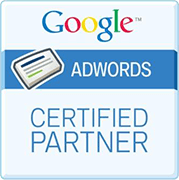There’s no denying the wealth of benefits blogging offers any small business. It can drive SEO traffic to your website, humanize your brand, help you connect with customers and is one of the most cost-effective ways to promote your services online.
Hopefully by now you’ve realized what an incredible asset a blog can be and you’ve taken the time to establish one on your website. Fantastic – you’re halfway there! But where to now?
For many Small Business Owners, the prospect of writing a blog post can be a daunting one. Chances are, you’re not a professional writer, so knowing how to begin a post, even what to write about, can be confusing and frustrating. What should you write about? Where do you even start?
That’s why we’ve put together this Blog Post Checklist, to help you construct well-planned, interesting and engaging blog content that will see your readers coming back for more.

1. Consider Your Point of Difference
Before you even put pen to paper (or should we say fingers to keyboard), the best place to start your blog post is to consider the following question: What is my unique point of difference and how will it help my audience?
It’s not exactly a difficult question, but one that is crucial to keep in mind during your blog writing process. The first part of this question focuses on what sets you apart from your competitors, that is, why your audience should buy from you rather than your competition. Ask yourself what unique skills or experience do you bring that will add something new to the conversation? What unique service or product do you have that differs from those of others? By keeping this in mind, you’ll give your business a chance to stand out from the crowd, instead of fading into the sea of millions of other blogs out there.
The second part of this question is just as important as the first: Exactly how will what you’re writing help your audience? In order for a blog post to really be successful and widely-read it needs to speak to your audience’s pain points, needs and interests. If you’re addressing these things, you’ll likely keep your audience engaged in what you have to say.

2. Think About Your Audience and Write for Them
One of the biggest traps that people often fall into when blogging is forgetting who they’re writing for. Remember your business blog is for your customers, not for you! This means
you should always keep your potential customers at the forefront of your mind while writing.
Have a good understanding of who your customers are, what questions they might want answered and what they might be struggling with.
If you can answer these questions and write accordingly, you’ll be targeting the things your audience wants to read about. They want to consume information that will benefit them or find a solution to their problem, and if you can provide them with this then you’ll find yourself quickly becoming one of their go-to authorities.

3. Have a Captivating Opening – Start with a Bang
Your opening, which includes your heading and first paragraph, is everything. That may sound dramatic, but if you can’t grab the attention of your audience within the first few lines, they’ll stop reading - even if the rest of your blog hits the mark perfectly. So don’t sell yourself short by starting with a dry, lifeless opening.
Be clear in your introduction. Don’t be too wordy, keep things short, sharp and simple. This is the best way to create a strong opening. You can also be quirky and funny. Start with an anecdote or interesting question that you think will grab your readers’ attention.
Your headline is one of the most important things when it comes to getting your readers’ attention. According to Copyblogger, 80% of people will read a blog headline, while only 20% continue on and read the rest of the post. This makes your headline absolutely critical.
Many people make the mistake of trying to be overly clever with headlines, but remember, simple is usually best. Crafting a headline that is clear, concise and self-explanatory will likely get more clicks than one which is overly complicated and clever.

4. Create Valuable Engaging Content
Providing your potential customers with valuable, engaging content is key to creating a successful, widely-read blog post. One of the best ways to do this is to write about what you know. Assert yourself as an authority in your field and people will start to view you as such.
But what exactly should you write about? Well, here are a few ideas to help you start to get your creative juices flowing.
- Provide a helpful ‘How-To’: As a Small Business Owner, there’s no doubt that you have a lot of expertise you can share with your audience. So share it! Provide them with some quality information they might struggle to find elsewhere.
- Solve a Problem: This is where knowing your audience really comes in handy. Ask yourself what they struggle with? What’s a problem they might have which you can provide a solution for.
- Promote your products or services: This one can be tricky in the world of blogging, as you don’t want to appear overly ‘salesy’, as this can be off-putting to potential customers. Instead, focus again on what it is that your reader might want or need, and then write about how your product can satisfy that.
- An event, sale or offer: These don’t have to be particularly long blog posts, but if you are holding a business event, or offering a special deal, then it can be helpful to promote this on your blog!
- Customer testimonials: This can be a great way to connect more with your audience and establish yourself as an expert in your field. People, after all, connect with real people, so by using the voice of customers on your blog, you’ll be providing readers with proof of your expertize and abilities.
- Industry-related news: This is also a good blog post to use in order to establish your credibility within your field. By sharing industry-related news or the opinions of influencers in your niche, you’re showing your audience that you’re engaged and “in-the-now” within your industry.

5. Be Entertaining
While it’s definitely important to be taken seriously by your potential customers, it’s also important to show your character! Your blog is the perfect opportunity to emphasise your business’s character and voice, so feel free to get a bit playful and colloquial if that’s the tone you want to go for.
An audience’s eyes are likely to glaze over if your produce dry, dull and boring content, so aim to be as entertaining as possible. How you do this will be up to you and will depend on your individual business.

6. An Image is Worth a Thousand Words
We’ve said it before and we’ll say it again: Images and graphics are crucial when it comes to gaining and maintaining your potential customer’s attention. And your blog is no different. By adding helpful, useful and high-quality images with captions to your blog post, you’ll be significantly enhancing your chances of maintaining your reader’s attention. People connect with images because they’re so easily consumable. A well-placed image can help break-up chunks of text and provide context for what you’re writing about. Multimedia, such as YouTube clips, Tweets, memes or gifs, can also be great ways to utilize entertaining multimedia throughout your blog post. However, Make sure they have relevance to your content; otherwise they could simply confuse your readers.
7. Consistency is Key
Sure, you can write a blog post once every month, but this won’t see you receiving nearly half the benefits that blogging can bring to your business. In order to fully reap the rewards of this powerful marketing tool, you really do need to invest some time and dedication into regular blogging.
Sporadic, inconsistent blogging can serve to make your business appear unprofessional or disinterested in your audience. In order to fully engage, you need to be regularly touching base with your readers, so they feel connected with your brand.
Dedicating time to a blog post can be difficult as a Small Business Owner, so it might be beneficial that you invest in the services of a professional copywriter who can help you get the job done. A professional will get to know your business, use effective keywords to make your content more ‘Google-friendly’ and capture the tone and voice of your brand.
Hopefully, now that you’re armed with this checklist, you’ll feel more confident in tackling your blog posts. The first few are often the most challenging, but once you start to understand your audience, develop your own voice and unique style, you’ll find the process much easier.
So, go forth and blog!









One Response to “The Small Business Owner’s Blog Post Checklist: The Definitive How-To Guide”
http://lorabaily.hatenablog.com/
I have read so many articles or reviews regarding the blogger lovers except this piece of
writing is genuinely a good paragraph, keep it
up.